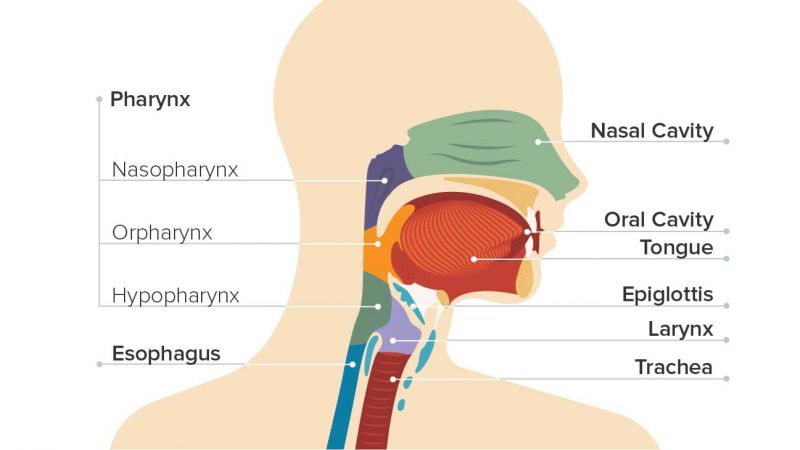Investigating the causes of salivary gland disorders
You have three pairs of salivary glands called parotid, submandibular, and sublingual. They are responsible for the production of saliva. Obstruction of the salivary glands are the most common causes of salivary gland disorders. These blocked glands can cause painful symptoms. In this article from Dr. Hossein Borjian's website The best dentist in Isfahan We examine the causes of salivary gland disorders.
Sialolithiasis and sialadenitis
In general, sialolithiasis and sialadenitis may occur in the salivary glands:
Sialolithiasis occurs when stones made of calcium form in the salivary glands. These stones can block the glands and can partially or completely stop the flow of saliva. fluidity (or sialadenitis) It is an infection that affects the salivary glands. This is often due to stones blocking the gland. Staph or strep bacteria can cause this infection. The elderly and infants are more susceptible to this disease.
Sjogren's syndrome
Sjogren's syndrome is another common salivary gland disorder. It occurs when white blood cells target healthy cells of moisture-producing glands such as salivary, sweat, and sebaceous glands.. This condition mostly affects women with autoimmune disorders such as lupus.
viruses
Viruses can also affect the salivary glands. This includes:
- Mumps
- Echo virus
- Influenza virus
- Coxsackie virus
- Cytomegalovirus
Cancerous and non-cancerous tumors
Even cancerous and non-cancerous tumors may occur in Salivary glands also be created. Cancerous tumors of the salivary glands are rare. When they do occur, it's usually in people, according to Cedars-Sinai 50 until the 60 It happens every year. Non-cancerous tumors that can affect the parotid glands include pleomorphic adenomas and wart tumors.. Benign pleomorphic adenomas can also develop in the submandibular gland and minor salivary glands, but this is rare..
Causes of inflammation of the parotid glands
The most common cases that may lead to inflammation of the parotid glands are::
- Sjogren's syndrome
- Stone in the salivary duct
- Viral parotitis - mumps
- Benign and malignant tumors
- Acute and chronic bacterial parotitis
- Granulomatosis with polyangiitis
- HIV-associated lymphocytic infiltration
- Sarcoidosis, Hereford syndrome with parotid enlargement, fever, anterior uveitis and facial nerve palsy
In the submandibular glands, many factors may lead to disorders, including::
- Stone in the salivary duct
- Benign and malignant tumors
- Sjogren's syndrome (It is less common).
But the common causes of minor salivary glands are::
- Mucosal
- Salivary gland infection
- Benign and malignant tumors

Causes of salivary gland infection
Mumps is the most common cause of salivary gland infection, although the incidence has decreased with the vaccine. Mumps usually causes bilateral inflammation of the parotid glands, although it can be unilateral, and other major salivary glands may be affected in about 10% of cases.. The inflammation lasts about a week and is accompanied by a mild fever and general weakness.
Other viruses that may acutely infect the salivary glands include::
- Herpes
- Parainfluenza
- Influenza A
- Parvovirus B19
- Coxsackie virus
Acute infection
Acute bacterial infection of the salivary glands Infection usually occurs in weak or dehydrated patients. Drug use may inhibit saliva production and increase vulnerability. Before the advent of antibiotics and intravenous fluid rehydration, bacterial parotitis had a high mortality rate.
Chronic infection
In general, chronic bacterial infection can occur in the background of a salivary gland that has already been damaged by stones, radiation, or autoimmune disease.. Chronic infection of the glandular elements destroys the salivary glands and can impair the protective functions of saliva and lead to infections and dental diseases.. As a result, they often go to the dentist first.
- Recurrent childhood parotitis. Frequent episodes of inflammation and pain of the parotid gland with fever and pain, the cause of which is unknown.
- Parotid inflammation is likely to be an early manifestation of HIV infection, and mucocele and oral ranula may also be a manifestation.
- Tuberculosis is a rare cause of parotitis and other inflammation of the salivary glands, but should be considered in people who are immunocompromised or from a high-risk population..
Symptoms of salivary gland infection:
- Then
- dry mouth
- Swelling that is usually painful and tender.
- Decreased mouth opening, difficulty speaking
- Pain in the mouth or face, especially with eating
- Abnormal or bad tastes with purulent secretions from the opening of the salivary duct (Bacterial infection)
The Instagram page of Dr. Hossein Borjian, the best dentist in Isfahan
Types and function of salivary glands
Approximately 1-1.5 liters of saliva are produced per day by three pairs of major salivary glands:
Parotid glands
They are located below the external auditory canal, between the vertical ramus of the lower jaw and the mastoid process. The parotid duct passes through the master and opens through a small papilla on the buccal membrane in front of the crown of the upper second molar.. parotid gland It has a close relationship with the facial nerve, which divides into its branches when passing through the parotid.
Submandibular glands
Pair of walnut-sized structures located below and anterior to the angle of the jaw and wrapping around the posterior edge of the mylohyoid muscle.. Their ducts exit to the floor of the mouth right next to the frenulum of the tongue.
Sublingual glands
They are located under the tongue and open to the floor of the mouth through several channels. Also a lot (۶۰۰-۱۰۰۰) There are minor salivary glands widely distributed throughout the oral mucosa, palate, uvula, floor of the mouth, posterior tongue, retromolar and peritonsillar regions, pharynx, larynx, and paranasal sinuses..
Saliva is composed of water, electrolytes, lubricants, antimicrobial compounds, enzymes, and growth factors.. Together, these components facilitate speech, chewing and swallowing and start the digestion process. Saliva also prevents problems by protecting the oral mucosa and teeth.
Attention :
- The scientific accuracy of the above article should be consulted with Dr. Borjian, a specialist, in person Gum and bone grafting be confirmed.
- This article was managed and published by the site admin.
Read more :
Precautions in wisdom tooth removal surgery
Benefits and side effects of fluoride therapy
Advantages and disadvantages of dental bonding



